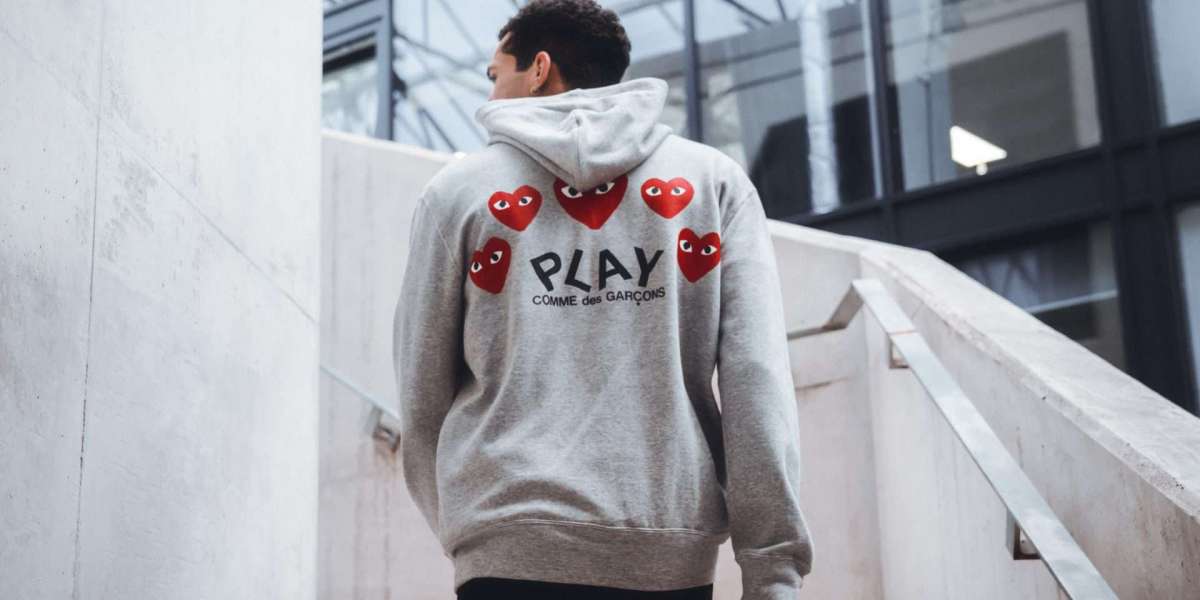Comme Des Garçons, the avant-garde Japanese fashion brand led by Rei Kawakubo, is renowned for its disruptive designs and rebellious spirit. While the label was already making waves in the fashion world following its provocative debut at Paris Fashion Week in 1981, its entry into the U.S. market through the opening of its first store in New York City marked a pivotal moment in its history. The first U.S. store in SoHo didn’t just signify Comme Des Garçons’ physical presence in America, but also its cultural impact on one of the most important fashion capitals in the world.
This move into the American market, particularly New York, was not only daring but essential for the global growth of the brand. Here, we explore the importance of this first U.S. store, its influence on the local fashion scene, and how it laid the foundation for the brand's ongoing success in the United States.
1. The Selection of New York: A Calculated Decision
The choice of New York City as the starting point for Comme Des Garcons expansion into the U.S. was no accident. At the time, New York was experiencing a creative renaissance, particularly in the SoHo district, which was known for its vibrant art scene and cutting-edge cultural movements. The city was a melting pot for avant-garde artists, designers, and creatives, making it the perfect location for a brand that defied conventional fashion norms.
SoHo, in particular, was an emerging hub for unconventional fashion and art, setting the stage for designers and artists who sought to challenge traditional notions of beauty and consumerism. Rei Kawakubo’s choice of New York reflected her understanding of the city’s unique position as a place where bold ideas could flourish, making it a logical first stop for her label's American debut.
2. The Store Design: Minimalism as a Statement
Comme Des Garçons’ SoHo store was as much a statement of Kawakubo’s philosophy as the clothes themselves. Rather than opting for the opulent, glamorous displays common in luxury fashion stores, the SoHo space was minimalistic and stark. The store was designed to feel more like an art gallery than a traditional retail space. Kawakubo and her team stripped back any excessive decoration, leaving raw, industrial features that emphasized the conceptual nature of the brand.
The minimalist interior design allowed the clothing to take center stage, drawing the eye to the asymmetrical, deconstructed silhouettes that defined Comme Des Garçons’ collections. This stark, almost clinical presentation contrasted sharply with the typical high-fashion retail experience in New York, where stores were often lavish and designed to reflect status and wealth. In this way, the SoHo store reflected Kawakubo’s desire to disrupt and reimagine the fashion industry—emphasizing artistic value over consumer-driven luxury.
3. Challenging American Fashion Norms
At the time of Comme Des Garçons’ entry into the U.S., American fashion was dominated by brands like Ralph Lauren, Calvin Klein, and Donna Karan, all of which celebrated structured, body-flattering designs aimed at enhancing traditional ideas of beauty and success. Rei Kawakubo’s designs stood in direct opposition to this aesthetic. Her collections, often made up of oversized, asymmetrical garments with unfinished edges and raw details, rejected the notion that clothing must be beautiful or flattering in the conventional sense.
In fact, Kawakubo’s early designs often obscured the body, creating silhouettes that were intentionally unconventional and challenging to the viewer. The brand’s introduction into the American market with its first New York store forced fashion enthusiasts and critics alike to reconsider what clothing could represent. Comme Des Garçons wasn’t about enhancing the wearer’s status or conforming to trends—it was about making a statement, provoking thought, and exploring new ideas of form and function.
4. An Artistic and Cultural Landmark
The opening of Comme Des Garçons’ SoHo store turned the retail space into a cultural landmark for the artistic community in New York. Kawakubo’s designs quickly attracted a niche audience of fashion-forward individuals, artists, and intellectuals who were looking for something that transcended traditional fashion. It wasn’t just a place to shop—it became a destination for those seeking a deeper, more intellectual engagement with clothing.
As such, the store became a meeting point for New York’s creative elite. It wasn’t uncommon to find artists, musicians, and avant-garde thinkers frequenting the space, drawn to the conceptual nature of Kawakubo’s work. By blurring the lines between fashion, art, and culture, Comme Des Garçons’ New York store helped cement the brand’s position as a thought leader in the industry.
5. Media Reaction: Polarizing Responses
Comme Des Garçons’ first store in the U.S. didn’t go unnoticed by the American fashion press. Fashion journalists and critics flocked to the SoHo location to witness the avant-garde brand in person. The reaction, however, was mixed. Some hailed the store as a refreshing break from the predictable luxury fashion scene, praising Kawakubo for her boldness and intellectual approach to design. Others were baffled by the brand’s aesthetic, calling it too abstract and impractical for the American consumer.
While some critics found the designs too radical, they couldn’t deny the impact the store had on the cultural landscape. As more fashion editors and tastemakers began to embrace the brand’s unconventional aesthetic, Comme Des Garçons gained a reputation as a fashion-forward, rebellious label that was unafraid to challenge the status quo.
6. The Influence of New York’s Creative Scene
The creative atmosphere of New York, particularly in the SoHo district, played a significant role in the brand’s successful American debut. Comme Des Garcons Hoodie The city’s openness to new ideas and its blend of fashion, art, and music created an environment where Comme Des Garçons’ designs could thrive. New York had long been a place where the avant-garde could find a foothold, and the SoHo store was at the heart of this movement.
The store became a beacon for the city’s most innovative designers and artists, many of whom were inspired by Kawakubo’s rejection of traditional fashion rules. The New York creative scene’s acceptance of Comme Des Garçons also contributed to the brand’s growing influence in America, setting the stage for further expansion.
7. Expanding Influence: More Than a Store
While the SoHo store was the first major American outpost for Comme Des Garçons, its influence extended far beyond its walls. The opening of the store helped spread the brand’s philosophy throughout the U.S., influencing not only consumers but also American designers who were intrigued by Kawakubo’s deconstructive methods.
American designers such as Thom Browne, Rick Owens, and Marc Jacobs have all cited Kawakubo and Comme Des Garçons as major influences on their work. The store’s presence in New York allowed these designers to engage more deeply with the brand’s ethos, sparking a new wave of creativity that would continue to shape American fashion for decades to come.
8. Lasting Legacy: The Gateway to Global Expansion
The success of the SoHo store marked the beginning of Comme Des Garçons’ lasting presence in the U.S. market and laid the groundwork for the brand’s global expansion. While initially catering to a niche audience of avant-garde enthusiasts, Comme Des Garçons’ presence in New York ultimately helped the brand gain a wider following in the U.S.
Today, Comme Des Garçons continues to be a powerful force in both American and global fashion. Its early days in New York helped establish it as a leader in conceptual fashion, influencing countless designers and inspiring a generation of creatives to think differently about what fashion could be.
Conclusion
Comme Des Garçons’ first U.S. store in SoHo, New York, was more than just a retail venture—it was a bold cultural statement that challenged the fashion norms of the time. By bringing her avant-garde designs to the heart of one of the world’s most influential fashion capitals, Rei Kawakubo introduced American audiences to a new way of thinking about clothing. The store became a cultural touchstone for artists, designers, and fashion lovers alike, helping to shape the future of fashion in New York and beyond.








